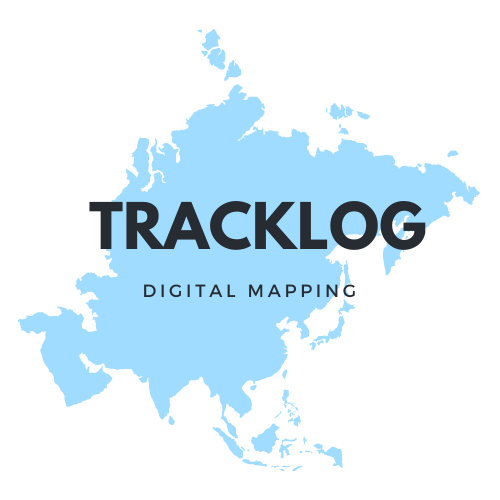Initialization
A plethora of linked material that has its greatest worth in its relationships can be found in education. The value of exploring these relationships at different scales is demonstrated by existing processes, such as the mapping in education system and the mapping of prerequisite linkages across courses, which can reveal gaps, overlaps, and pathways in curriculum redesign (Novak & Gowin Reference Novak and Gowin 1984; Jenkins & Cho Reference Jenkins and Cho 2013; Bailey et al. Reference Bailey, Jaggars and Jenkins 2015); and the linking of learning outcomes to educational resources, which is a necessary component in designing adaptive learning environments.
Linkages between and within learning processes must be studied in evidence-based frameworks in order to inform teaching strategies and changes in students’ knowledge. We can advance in learning engineering (Saxberg Reference Saxberg 2017) and create better educational experiences by analyzing the relationships among connected data.
Educational mapping
The analysis of an educational system to find entities, linkages, and attributes is known as educational mapping. Data is generally represented in ways that do not permit scalable analysis in the current mapping procedures used in education (such as curriculum mapping and idea mapping). Particularly, strongly related data are frequently represented implicitly, with relationships appearing as flattened characteristics of the entities they link. The lack of a first-class representation causes information loss and compels the use of ad hoc procedures to examine system relationships. A curriculum map, for instance, is often shown as a table with topics or courses (the “entities”) listed in the table’s rows. The columns of the table list relevant information such as assessments, standards addressed, instructor, etc. Each row is identified as an entity and given a first-class representation in this tabular representation. Relationships between entities are, however, implicitly defined because they are flattened into the row’s column characteristics and are not described as first-class objects in their own right. Because of this method of information representation, analysis algorithms must be constructed in a case-specific manner, necessitating a potential analysis code variation for every new dataset.
Primary and secondary education
Of course, primary and secondary education do not include mapping a lot. Just in some cases.
This manual approach, while suitable for a one-off research, does not scale to large or dynamic data sets and does not offer a systematic framework for visualization and analytics. In this article, we offer a structured, scaleable paradigm for instructional mapping. For the purpose of modeling highly connected educational data, we suggest a network-based strategy. In several domains, network models are used to represent entities and their connections. Social and business networks are two examples.
A network model
Network models’ ability to clearly describe relationships as first-class objects rather than as derived features of other model objects is one of its main advantages. A network model would explicitly represent the topics, courses, exams, standards, instructors, etc. as entities in the curriculum map example given above. It would also explicitly express the many interactions between these various types of entities. While it may seem that the network model is a less compact representation than the conventional table, in reality this enlarged representation is much more flexible and scalable. The reader could envision several tables or spreadsheets listing all of these things and all of these links.
Educational data
In this study, we argue that such a modeling strategy is crucial for expressing, displaying, and large-scale analysis of educational data. If the potential of learning analytics and educational analytics is to be fully realized, scalable modeling is crucial. Siemens & Long Reference Siemens and Long 2011; Campbell and Oblinger 2007). Curriculum mapping, accreditation mapping, and concept mapping are three use cases we consider to be particularly significant in educational analytics. We provide a method to formally represent and analyze the respective data sets as a network in order to provide motivation from real examples.
Networking strategies in education
In this section, we first go over some fundamental ideas in graph theory and network modeling. Following that, we provide three models for educational networks: a model for curriculum mapping, a model for accreditation mapping, and a model for concept mapping. We outline the network model’s components for each and go over how graph theory’s tools can be used to analyze and create instructional systems at various scales.
Fundamental ideas in network modeling
For instance, topics, courses, exams, standards, timetable details, and/or students could all be considered entities in a curriculum map. Relationship edges may display details about the subjects covered in various courses, the courses a specific student has taken, how evaluations are related to various subjects, and so forth. The ability to do scalable studies on the dataset, such as a pathway analysis of the topics to which each student has been exposed and the student’s related level of proficiency for each topic, is made possible by the explicit modeling of these interactions in the graph structure. Such an analysis can be quite helpful for career planning and student counseling. However, given that tabular models compress relationships into implicit representations, it is impossible in the mapping methods used today.
Degree programs
An edge in the graph structure is given textual and numerical parameters, such as name, directionality, cost, and relationship weighting. Text and numerical attributes are added to vertices to indicate information about the item, such as its name and other crucial characteristics. For a directed edge, the relationship only holds in one direction; the edge’s direction is important and is visually denoted by an arrow. For instance, Course A can be a prerequisite for Course B. A directed edge heading from Course A to Course B would be used to depict this. An undirected edge is bidirectional, meaning that the relationship holds true both ways. For instance, there may be no apparent order to how one topic relates to another. This undirected edge is often not visually represented by an arrow. Although the terms “graph” and “network” are sometimes used interchangeably, in this research we use the term “graph” to refer to a situational structure with real-world data representation and the term “network” to refer to a theory and methodologies of graph structures.
Subgraph
On occasion, we may be only partially interested in studying the network model. A subgraph of a graph is a different graph that is created from a subset of its vertices and edges. We sometimes examine the paths connected to a directed subgraph. This subgraph’s vertices are sorted topologically to produce an ordering, with a vertices ordered before every directed edge from a vertex. We can conceptually depict this subgraph in with vertices organized in increasing order of path length from a source vertex. Then, we may give each vertex in the subgraph a rank, where the rank of a vertex is defined as the length of the longest path between the source vertex and the destination vertex. This study is helpful, for instance, when looking at the links between course prerequisites. The most stringent set of precondition requirements that the student must satisfy before they may enroll in that course is then represented by the maximum length of the pathway connected to that course. This offers helpful information for degree planning and student advising. In the examples of curricular mapping that will be provided later in this paper, this will be further illustrated.

Mapping is a really important thing as it gives the little human to develop critical thinking. Secondary school presents the students the possibility to decide and to enlarge their worldview. Education systems should be oriented not on craming something by heart but on the development of the idividuality. Students complete their tasks and are sure that they know and can much more right now. The degree program can identify gaps and convert somebody’s weaknesses into strengths. School mapping may help in it too. Sustainable development of the children will guarantee success in their future lives. Same method is used almost in all educational buildings..

